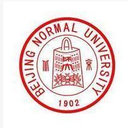Antioxidant effects of ginkgolides and bilobalide against cerebral ischemia injury by activating the Akt/Nrf2 pathway in vitro and in vivo.
キーワード
概要
Ginkgolide terpenoid lactones, including ginkgolides and bilobalide, are two crucial bioactive constituents of extract of Ginkgo biloba (EGb) which was used in the treatment of cardiovascular and cerebrovascular diseases. The aims of this study were to investigate the antioxidant effects and mechanism of ginkgolides (ginkgolide A (GA), ginkgolide B (GB), ginkgolide K (GK)) and bilobalide (BB) against oxidative stress induced by transient focal cerebral ischemia. In vitro, SH-SY5Y cells were exposed to oxygen-glucose deprivation (OGD) for 4 h followed by reoxygenation with ginkgolides and BB treatments for 6 h, and then cell viability, superoxide dismutase (SOD), and ROS were respectively detected using kit. Western blot was used to confirm the protein levels of hemeoxygenase-1 (HO-1), quinone oxidoreductase l (Nqo1), Akt, phosphorylated Akt (p-Akt), nuclear factor-E2-related factor2 (Nrf2), and phosphorylated Nrf2 (p-Nrf2). GB combined with different concentrations of LY294002 (PI3K inhibitor) were administrated to SH-SY5Y cells for 1 h after OGD, and then p-Akt and p-Nrf2 levels were detected by western blot. In vivo, 2 h of middle cerebral artery occlusion (MCAO) model was established, followed with reperfusion and GB treatments for 24 and 72 h. The infarct volume ratios were confirmed by TTC staining. The protein levels of HO-1, Nqo1, SOD1, Akt, p-Akt, Nrf2, and p-Nrf2 were detected using western blot and immunohistochemistry (IHC). Experimental data in vitro confirm that GA, GB, GK, and BB resulted in significant decrease of ROS and increase of SOD activities and protein levels of HO-1 and Nqo1; however, GB group had a significant advantage in comparison with the GA and GK groups. Moreover, after ginkgolides and BB treatments, p-Akt and p-Nrf2 were significantly upregulated, which could be inhibited by LY294002 in a dose-dependent manner, meanwhile, GB exhibited more effective than GA and GK. In vivo, TTC staining indicated that the infarct volume ratios in MCAO rats were dramatically decreased by GB in a dose-dependent manner. Furthermore, GB significantly upregulated the protein levels of HO-1, Nqo1, SOD, p-Akt, p-Nrf2, and Nrf2. In conclusion, GA, GB, GK, and BB significantly inhibited oxidative stress damage caused by cerebral ischemia reperfusion. Compared with GA, GK, and BB, GB exerts the strongest antioxidant stress effects against ischemic stroke. Moreover, ginkgolides and BB upregulated the levels of antioxidant proteins through mediating the Akt/Nrf2 signaling pathway to protect neurons from oxidative stress injury.





